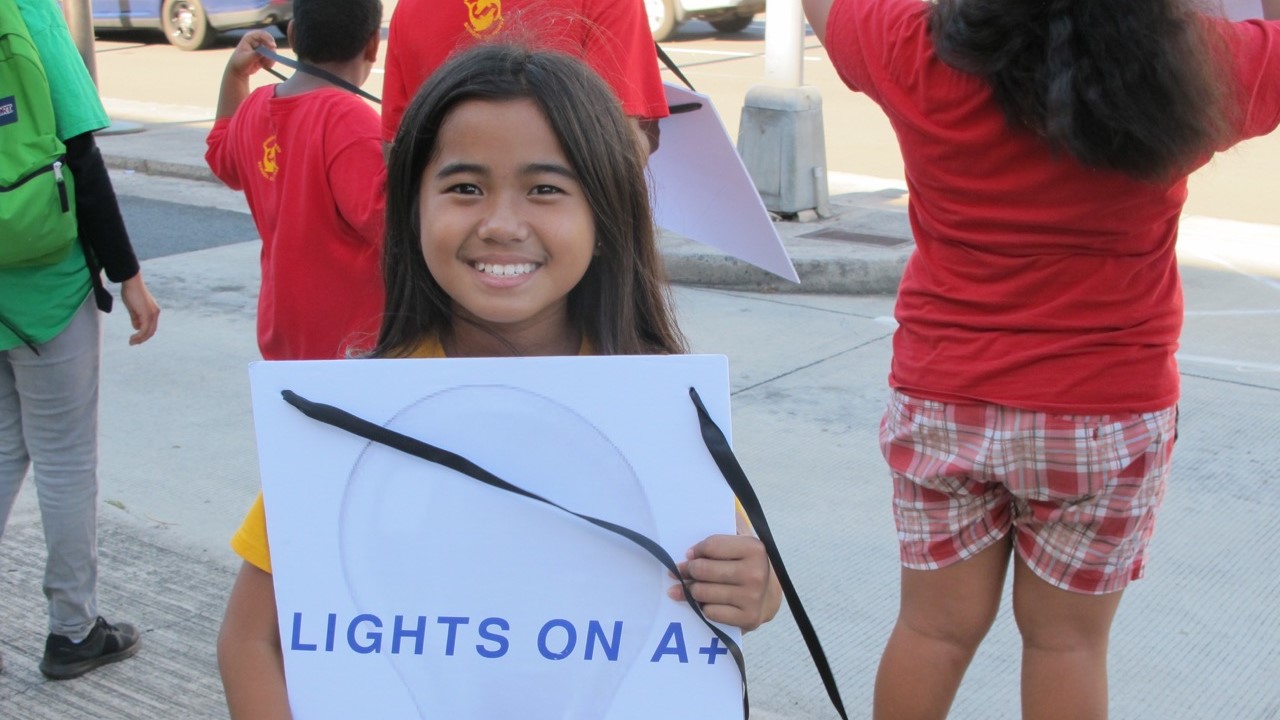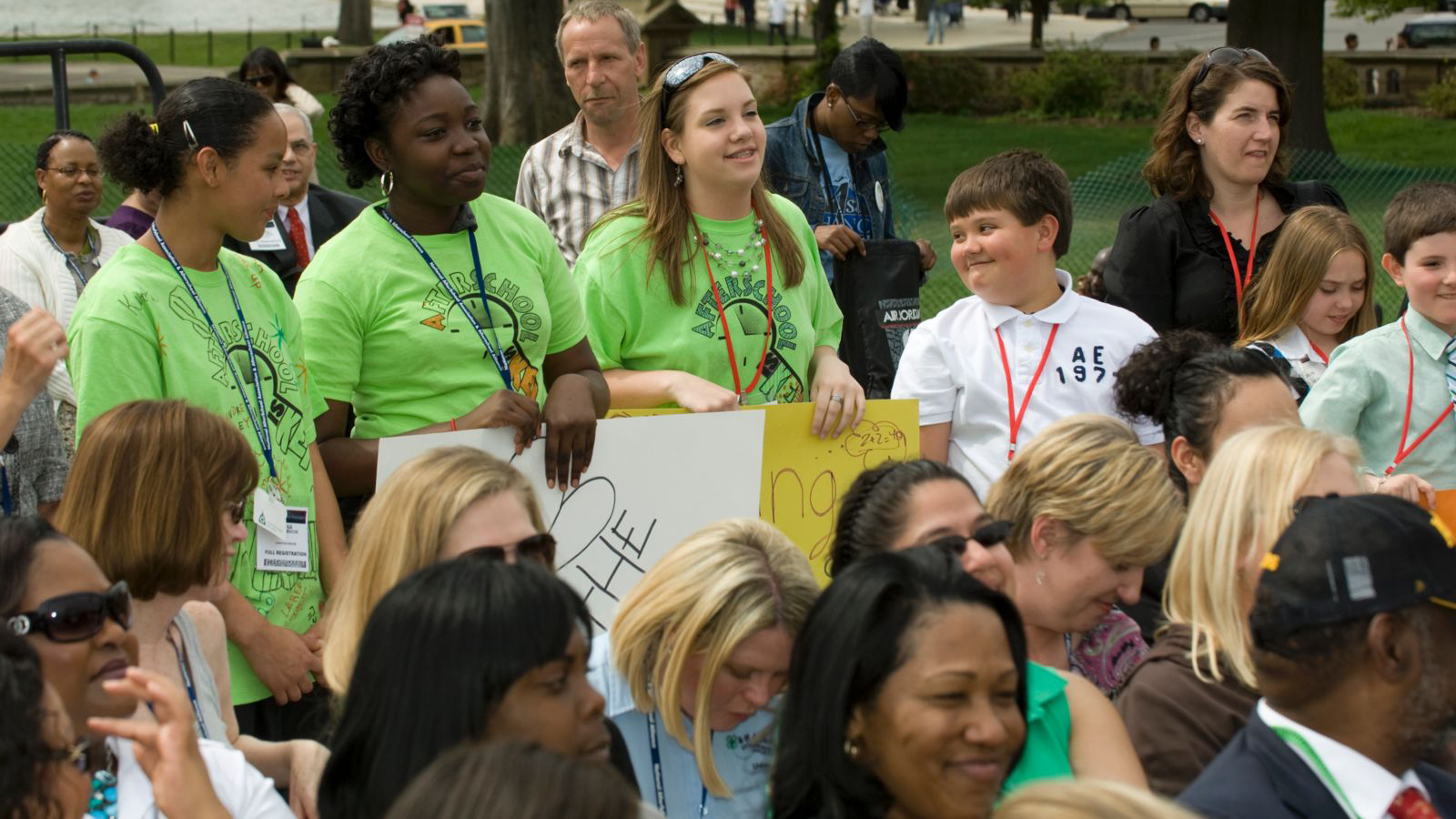Reaching out to the media
Lights On Afterschool provides a wonderful opportunity to generate positive news coverage of your afterschool program and to remind the public of the need to provide sufficient funding for afterschool.

Use our sample media alert to tell reporters about your Lights On Afterschool event and convince them that it's a genuine and important news story worthy of coverage.
Sample media alert
Adapt this sample news release for your own event. Distribute it to media who attend, and then email or fax it that same day to reporters on your press list who missed the event.
Sample news release
Lights On Afterschool is the biggest day of the year for afterschool to make a splash online, get trending, and reach new audiences about the impact of afterschool programs.
Tools for social mediaHere are the most important steps to get the media talking about your Lights On Afterschool event. If you're short on time or have about one week before your event, these are the most important strategies to pursue.
- Contact local news media (reporters, producers, editors, bloggers, etc.) two or more days in advance to let them know about your Lights On Afterschool event. Inform them of who the speakers will be, what activities will be happening, when and where the event will take place, and why afterschool is important to the community. You can reach reporters by emailing a media alert, or if you’re really pressed for time, simply send an email sharing those details.
- The day before the event, follow up by calling journalists to make sure they saw your email and know about the event. Don’t be surprised if they missed your message, and be prepared to re-send it. Even if they can’t come, the call will help you develop relationships with key journalists.
- Prepare a news release to give to reporters who come to the event and send to those who don’t attend. Also, arrange for someone to take pictures at the event. After it ends (that afternoon/evening or the next morning), email three or four good photos and the news release to journalists who did not come. Remember not to overlook community and specialty newspapers since they are the outlets most likely to use your photos.
- After the event, send a thank-you note to any media outlets that covered it.
After completing the steps above, take advantage of these strategies to expand your media outreach efforts. These steps typically require at least two weeks of lead time before your event.
- Pitch your event to local radio talk shows and morning television programs. Send emails (sample here) to producers or “bookers” of local programs telling them about your Lights On Afterschool event, explaining why afterschool matters to the community, and why it needs community support. Ask if they would be interested in doing an interview on the morning of the event.
- Develop press kits to distribute to the media at your Lights On Afterschool event. Make enough for all the journalists you expect will come, and then a few extra. The kits can be assembled in plain folders with a label from your afterschool program on the cover, or, if you want to be creative, have students decorate the covers and write “press kit” prominently under the drawings. The kits should contain:
- Your news release
- A one-page background sheet or brochure on your program
- A one-page fact sheet on afterschool programs with data on your state or community (click on your state, then on "Fact Sheets and News Releases," then on "Fact Sheet")
- Plan what you want the media to see when they come to the event. Have a sheet for media sign-in at the event, and make sure reporters have access to speakers and that they know what activities the students are doing. Think about what activities will create the best visuals and steer journalists to those.
- Write an op-ed or guest editorial to submit to a local newspaper a week to ten days before the event. It should discuss the vital role afterschool plays in the community, the challenges of providing afterschool for all, and the details about your Lights On Afterschool event. Take a look at the op-ed pages of your newspaper to see what kinds of pieces they publish by community members, then check the newspaper’s submission policies (there’s usually a link on the opinion section of the newspaper’s website or in the “contact us” section). Be sure to observe the paper’s word limits. Here are some tips on writing op-eds. Submit your op-ed about a week before the event, so the paper will have time to review it and, if they choose, publish it a day or two before Lights On Afterschool or the morning of your event.
You can help ensure media buzz around your Lights On Afterschool event by doing these additional things. You'll typically need to start taking these steps around a month before your event.
- Send a calendar announcement to the media, as well as to other organizations that might be interested. Newspapers, television, and radio stations often run calendars of local events, as do websites and blogs. Some require long lead times, so try to send your calendar announcement a month before the event. It’s okay to send a calendar announcement with the “bare bones” of the event (date, time, place, and general activities), even if you don’t have all the speakers confirmed yet.
- Send the same announcement or a sample newsletter article to local organizations that might help promote your event — community organizations, houses of worship, PTAs, etc.
- Write a short script for a radio public service announcement (PSA) and send it to a local radio station for its on-air hosts to read.
- Ask a local city or county council member, or the mayor or county executive, to issue a proclamation marking Lights On Afterschool day.
- Add a few additional items to your press kit, including proclamations and letters from parents and students singing the praises of your program.

Watch the Webinar
In our webinar, "Lights On Afterschool: Traditional and Social Media Strategies," we provided ideas for engaging the media and using social media before, during, and after your Lights On Afterschool event to maximize your event's profile in the community and overall impact. We were joined by Gretchen Wright, a Vice President and Principal at PR Solutions, Inc., who provided valuable insights into how to engage the media for your event most effectively. We were also joined by Brent Cummings, the 21st CCLC Program Director at Walla Walla Public Schools, who provided some great tips for how to capitalize on social media to make sure your Lights On Afterschool event is a huge success!
Light On Afterschool events provide wonderful opportunities to generate positive news coverage, raise public awareness of your afterschool program, and remind the public of the need to provide sufficient funding for afterschool. Reporters seek out stories that affect the community and will want to tell readers, viewers, and listeners about the impact of your program. This 30-minute webinar is a quick and easy way to discover how to make the most of this annual opportunity.
Pointers from the Pros
The Dallas AfterSchool Network hosted a bus tour of afterschool programs in north and south Dallas for local dignitaries and community leaders, affording them a realistic look at “a day in the afterschool life of a Dallas child.” As a direct result of the bus tour, the local ABC television affiliate committed to doing a weekly segment on afterschool, and Dallas AfterSchool Network Executive Director Tanya McDonald was able to establish relationships with federal and state representatives and schedule follow-up meetings.
Read the case study